UK Warship Repels Houthi Drone Attack In Red Sea
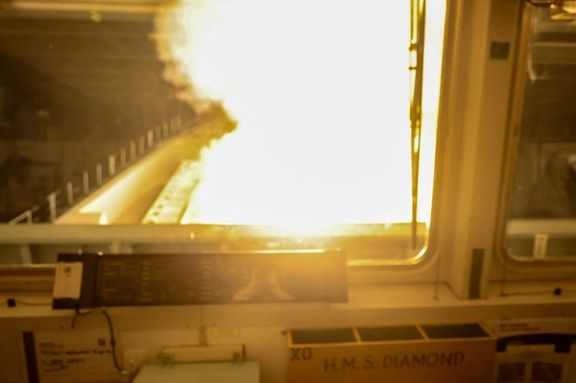
British warship the HMS Diamond has repelled a drone attack from Yemen's Houthi group in the Red Sea, British officials said.

British warship the HMS Diamond has repelled a drone attack from Yemen's Houthi group in the Red Sea, British officials said.
"Deploying her Sea Viper missile system, Diamond destroyed a drone targeting her with no injuries or damage sustained to Diamond or her crew," the Ministry of Defence said in a statement on Sunday.
"These intolerable and illegal attacks are completely unacceptable and it is our duty to protect the freedom of navigation in the Red Sea."
The Iran-backed Houthi movement began launching waves of exploding drones and missiles at vessels on November 19 in response to Israel's military operations in Gaza. Israel launched its offensive after Hamas, another Iran-backed group, invaded Israel, killing 1,400 mostly civilians and taking hundreds of hostages.
On Friday, Houthis claimed responsibility for a missile attack that set a British oil tanker on fire in the Gulf of Aden. Shipping data suggests the Marlin Luanda was heading towards Singapore under the flag of the Marshall Islands. It was hit by a missile 60 nautical miles southeast of Aden in Yemen, according to UK Maritime Trade Operations.
Reports suggest the tanker is carrying Russian naphtha. This fully contradicts Houthi claims that they target vessels bound for Israel of linked to Israeli interests.

Earlier Friday, the Houthis had fired an anti-ship missile toward USS Carney. That missile was successfully shot down, according to the US Central Command.
The attacks come amid reports that China has called on Iran to rein in the Houthis.
US and British warplanes, ships and submarines have responded to the Houthi attacks on shipping with dozens of retaliatory strikes across Yemen against Houthi forces.
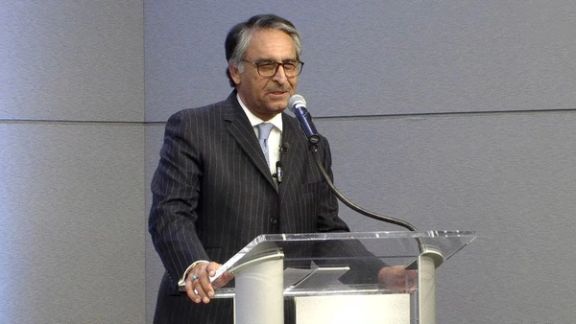
Pakistan's foreign minister has called on the authorities of the Islamic Republic to address the armed attack on Saturday morning in Saravan, Sistan-Baluchestan province.
Nine Pakistani workers were killed by unidentified gunmen in a restive southeastern border region of Iran on Saturday. The incident occurred just over a week after a deadly exchange of cross-border missile fire between the neighboring countries, resulting in the deaths of nearly a dozen individuals, including at least two children.
Jalil Abbas Jilani, urged the authorities of the Islamic Republic to address the issue, saying, " This heinous attack is an attempt to spoil relations between Pakistan and Iran by our common enemies."
So far, no group has claimed responsibility.
The Sistan and Baluchestan deputy governor, Alireza Marhamati, told state news agency IRNA that according to survivors of the incident, "Three-armed people shot at the foreigners (Pakistanis) after entering their residence and fled the scene."
Pakistan's new ambassador to Iran also said he was "deeply shocked by horrifying killing of nine Pakistanis in Saravan” and asked Tehran to extend its cooperation for investigating the armed attack.
Naser Kanaani, the spokesman for Iran’s Ministry of Foreign Affairs, also condemned the attack, saying,“Iran and Pakistan will not allow enemies to damage the brotherly ties between the two countries.”
Sistan-Baluchistan, among the predominantly Sunni Muslim regions in Shiite-majority Iran, is a scene of ongoing turmoil involving drug trafficking networks crossing borders, insurgents from the Baluchi ethnic groups, and armed factions.

Iranian graduates seeking higher education in the US are facing significant delays in obtaining visas, even with letters of admission from top universities.
Iran International has spoken to some students who have been waiting for much longer than the 6-month limit, after which a prospective student can pursue legal action under current advice of the State Department.
The delays are attributed to increased security scrutiny for visa applications from citizens of nations categorized as supporters of terrorism, including Iran.
Immigration attorney David Gluckman, who is familiar with such cases, says the long delays in student visa decisions almost “exclusively” affects Iranians.
“There are some other nationalities that I deal with in these types of cases. But in terms of student visa cases, it’s almost all Iranians,” Gluckman says, noting how things have gotten worse in recent years, under both Presidents Donald Trump and Joe Biden.
“Agencies are required to pass on or to make decisions on matters that are before them within a reasonable time,” Gluckman explains, “so if… it's taking an unreasonable length of time, you can sue them under the Administrative Procedure Act. In the past, it had been a little bit more manageable… but it’s just gotten worse and worse and I've had to file more and more lawsuits. And just within the last several months... even lawsuits haven't been as effective as they used to be.”

The State Department denies that Iranian students are treated differently because they are from Iran.
“Every Visa Decision is a national security decision, and every prospective traveler to the United States undergoes extensive security screening,” a spokesperson for the State Department wrote to Iran International. “Students from Iran are one of the top 25 places of origin for international students studying in the United States, and we welcome Iranian students.”
Currently, around 11,000 Iranian students study in American universities, according to the Institute of International Education, which tracks international students in the United States.
There’s no data on the success rate of applications for student visas among Iranians, but one Telegram group created by and for students sharing their ‘visa experience’ has almost 700 members, most of whom are still waiting for a decision.
The overarching feeling among prospective students is that an entry clearance (a visa) is the tallest hurdle, much taller than shining grades that would get them admitted to a respectable university in America.
Students affected by the delay speak of a sense of despair, especially since –to them at least– it all looks so random, impossible to plan for, unlike the application, even the admission, for which they plan and endeavor for many years.
“Outside the embassy, everyone was talking about an officer who rejected everyone, but I ended up with another officer who was nice,” says one prospective student, who despite his apparent luck has been waiting for three months for an answer.
Another student says, “I asked the officer how long I’d have to wait for the visa? They told me, don't worry, you will have it, just wait for our email. I never received any emails after that.”
The impact of these delays is felt not only by the students but also by the institutions that seek international talent to advance their research.
“We basically hire students to come and work on our research projects,” says Prof. Amir Aghakouchk from the civil engineering department at UC Irvine. “The Number of PhD applicants has gone down… because there are a lot of job opportunities. That's why bringing talent from outside the US is sometimes absolutely necessary.”
Some institutions and many scholars in the US–especially those of Iranian origin– are voicing their concern about the delays. They maintain that academic environments are best kept free from political tensions.
But not everyone agrees with that statement.
Kaveh Madani, an academic and director of the UN think tank on water, believes universities are “political” across the world. “Every country has the right to ensure that the people they allow in are not a security risk,” he says, “but the existing procedures are not effective. Individuals associated with the regime… go through the filter and innocent people who have nothing to do with politics face such problems.”
This is a sentiment echoed by many of those waiting to be ‘cleared’ to pursue their dream in American universities.
“We are not political, and we are not trying to escape the situation in our country,” says one female student who has had PhD offers from three universities in the US, still waiting for a response from the embassy. “I hope we get the answer and don't get mixed up with everything else.”
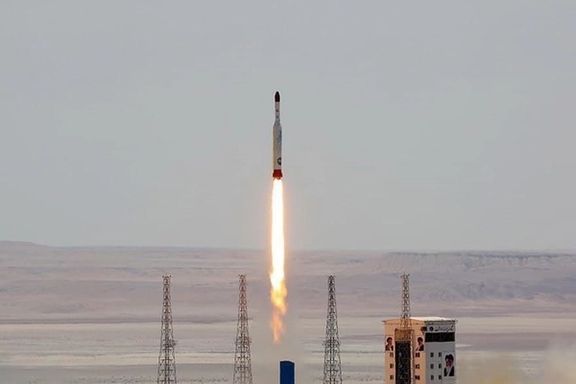
Iran simultaneously launched three satellites for the first time on Sunday using the domestically developed Simorgh (Phoenix) rocket, state media reported.
One satellite weighing 32 kg (70 pounds) and two nano-satellites of less than 10 kg each were sent to a minimum orbit of 450 km (280 miles), with the two smaller devices aimed at testing narrowband communication and geo-positioning technology, the reports said.
Iran’s satellite launches are viewed by the United States and its European allies as a possible cover to develop long-range ballistic missiles capable of carrying nuclear warheads.
A recent US intelligence assessment suggested that launching satellites “shortens the timeline” for Iran to develop an intercontinental ballistic missile. It is all the more worrying, experts say, since Iran is on the verge of nuclear capability, according to most intelligence estimates and recent International Atomic Energy Agency reports.
This was Tehran’s second satellite launch in one week. On January 21, the government announced the launch of the Soraya satellite, which it claimed was put into an orbit 750 kilometers above the earth.
The larger satellite, named "Mahda" and built by Iran's Space Agency, is meant to test the accuracy of the Simorgh rocket in delivering multiple cargoes to space.
European powers raised concerns about the launch of Soraya, saying that the space launch vehicle's technology could be used for the development of long-range ballistic missile systems.
Iran on Saturday dismissed European countries’ condemnation of its launch of the Sorayya satellite, saying peaceful technological advancement in the aerospace field was the country’s legitimate right.
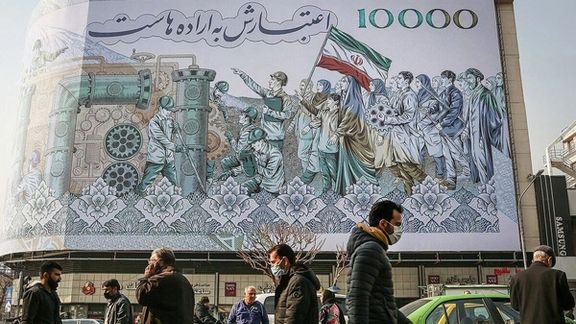
Despite extensive currency injections, Iran’s rial is on a nosedive amid heightened regional tensions and prospects of Donald Trump winning the US presidency.
The rial fell to 562,000 against the US dollar on Saturday, as uncertainty grows about a military escalation in the region and Trump's successes in US Republican primaries.
UPDATE: The expected escalation happened quickly. Following the news on Sunday of an attack on a US base in Jordan where three US serviceman died, and President Joe Biden's threat of retaliation, the weakened rial fell further to 575,000 per dollar.
The Iranian currency has fallen about 13-fold since 2018, when then-president Trump pulled the United States out of the 2015 JCPOA nuclear deal and imposed sanctions on Iran’s oil exports and international banking.
Additionally, the price of the British pound and euro, which soared to record highs in Iran last Tuesday, experienced further escalation on Saturday. Each pound was traded for 714,200 rials, while each euro fetched approximately 610,000 rials in Tehran's free currency market, which despite some official exchange rates, reflects the real value of the rial against foreign currencies.
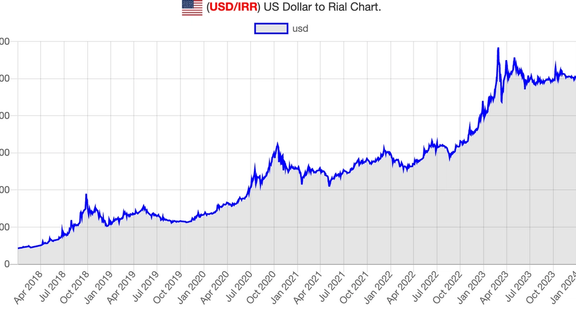
Amid the economic woes, Iran's leading economic newspaper Donya-e-Eqtesad has drawn attention to the potential ramifications of Trump's potential return to the White House, citing it as a factor contributing to the rise of foreign currencies and the price of gold. The paper also highlighted regional instabilities, particularly in the Red Sea, as factors fueling economic insecurity among Iranian investors. Last week, the devaluation of the rial intensified following Iran's ballistic missile strikes on targets in Iraq and Pakistan. Tensions were already heightened due to Iran-backed Houthis' assaults on commercial vessels in the Red Sea.
According to Donya-e-Eqtesad, market analysts attribute the rial’s freefall to various factors, including "increased cost of trade with Iraq," as well as the developments related to the US presidential elections.

However, state-run media in Iran claim that the rise in the foreign currency exchange rates is just a “bubble” created by those who seek to benefit from fluctuations in the market. Iran’s chief banker Mohammad-Reza Farzin claims that the country enjoys a “favorable foreign exchange reserves.” Farzin said last week that fluctuations in the market are transient.
Fars news agency, affiliated with Iran’s Revolutionary Guards, claims that the rial will bounce back in the coming days, speculating that rial’s will settle at about 520,000 per dollar.
Asr-e Iran, a moderate-conservative website, published an article arguing that the impact of the news about Trump’s victory on Iran’s currency market is trumpeted as a manipulation tactic aimed at creating a false psychological and media atmosphere and fostering speculative inflation in Iran.
Rejecting the assumption that Iran’s oil exports increased due to a lax enforcement of US sanctions under the Biden administration, Asr-e Iran said the real reasons behind the rise in oil revenues are the government's efforts to sell oil through unofficial channels and the recovery of the global energy market following the slump caused by the COVID-19 pandemic. It added that geopolitical repercussions of the Russian invasion of Ukraine and the OPEC+ decision, in collaboration between Russia and Saudi Arabia, to curb crude supply have also prevented market saturation and created opportunities for the sale of sanctioned oil, including the Iranian crude. A very significant factor is the willingness of small Chinese refineries, known as "teapots," to buy sanctioned oil at discounted rates, the article highlighted.
All in all, there is a rumor circulating in Iran that the government was trying its best – mainly through injecting foreign currency into the market -- to keep the wobbly rial stable until the re-election of Joe Biden, who is believed to have overlooked Iran's sanction-busting. However, the growing chance of Trump landing at the White House has dashed Tehran’s hopes for the steady flow of its oil exports.
Sajjad Bourbour, a senior economic pundit, told Centrist Aftab News that the Iranian currency market heavily depends on the prospects of Tehran mending relations with the West. He mentioned that despite the Central Bank’s injection of approximately 2 quadrillion rials (about $4 billion) into the market to prevent rial's fall, the currency is at its all-time low.
With an annual inflation rate of at least 50 percent, the diminishing value of the rial signals further inflationary pressures in the months ahead. Monthly wages for workers, averaging less than $200, exacerbate the challenges within an economy where inflation outpaces salary adjustments. Such economic strains have led to strikes and protests across various sectors, including oil and gas production platforms and refineries.
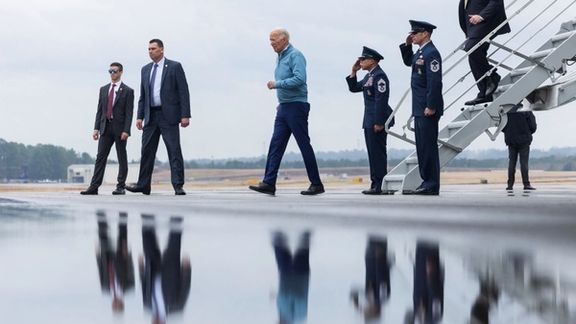
Iran International has learned that the US and its European allies are considering boosting sanctions on Iran due to Tehran's recent regional behavior, particularly its support for Houthi forces.
"Following the threats posed by the Islamic Republic in the region, especially its support for the Houthis and proxy groups in Iraq in recent months, which led to the formation of an international coalition in the Red Sea, recently, the United States and some Western countries have initiated discussions to intensify sanctions against Iran,” a diplomatic source familiar with ongoing discussions told Iran International. The diplomat added that the sanctions can be similar to what was in place before the JCPOA nuclear deal in 2015.
Iran International asked the US State Department to comment on the diplomat’s revelations, but an official said Washington does not comment on its potential sanctions policies. However, the administration did not dismiss the revelations.
In essence, the diplomatic source indicated that the Biden administration has decided to change its Iran policy, which has relied on diplomacy to persuade Tehran to reduce its uranium enrichment and refrain from regional aggression. In a move to apparently appease Tehran, the US unblocked around $16 billion of Iran’s money in Iraq and South Korea. Now, this potential shift would involve increasing sanctions pressure on the Islamic Republic.
Such a move could entail the activation of the UN Security Council’s ‘trigger mechanism’, a provision within the 2015 JCPOA nuclear agreement. The mechanism allows any participant of the JCPOA to demand the reinstatement of UN sanctions that were suspended when Iran and the world powers agreed to the nuclear deal. These sanctions included an arms embargo, strict monitoring of Iranian financial and technological dealings related to its nuclear and military programs and banking restrictions.
US allies, Britain, France and Germany are still participants in the JCPOA but refrained from activating the trigger mechanism in the past three years, as Tehran began violating nuclear limitations imposed by the JCPOA. The Biden administration was striving to return to the JCPOA, which President Donald Trump abandoned in May 2018, imposing sanctions on Iran.
During intense negotiations in 2021 and 2022, it is believed that the Biden administration decided not to vigorously enforce the Trump-era sanctions. This allowed Iran to boost its oil exports to China through illicit shipping methods. Tehran’s crude exports quadrupled between mid-2020 to late 2023, reaching 1.5 million barrels per day at one point.
Washington and its allies could also boost sanctions without resorting to the JCPOA ‘trigger mechanism.’ Major European countries could join the current US sanctions regime, prohibiting third parties from buying oil from Iran and restricting its international banking relations. Iran now can use the euro more easily than the US dollar in transactions. Europeans could also impose sanctions on third party banks, restricting the use of the euro in transactions with Tehran.
The Biden administration's potential shift in policy towards Tehran comes after the revelation that the United States had warned Iran of a potential terror attack one week before an ISIS twin bombing in Kerman on January 3, which resulted in the loss of 95 lives. Despite this friendly gesture, the Iranian government did not act on the tip, allowing thousands of people to visit the tomb of IRGC's Qasem Soleimani on that day. On the contrary, Iranian officials blamed the United States and Israel for the bombing and reiterated their unfounded accusations that the US has established and maintained the Islamic State group.
The Iranian government organized street celebrations hours after the October 7 Hamas invasion of Israel and the killing of more than 1,100 people, mostly civilians, as well as the taking of around 250 hostages. Tehran, which had armed and trained Hamas forces before the attack, has maintained its public support for the militant organization.
Moreover, its proxy forces in the region, including Shiite armed groups in Iraq and Syria, the Lebanese Hezbollah and Yemen’s Houthis have launched attacks on Israel and US interests. In Iraq and Syria, Iranian proxies have launched more than 150 rocket and drone attacks against US forces.
But a more serious development is the decision by Houthis to use their control over vast coastal stretches of Yemen to target international commercial traffic in the Red Sea area. The attacks began in mid-November after Iran’s Supreme Leader Ali Khamenei called on Muslim countries to blockade Israel. The US and UK have launched retaliatory strikes recently targeting Houthi military capabilities, but their attacks on vessels continue daily.